You may think choosing a new kitchen extractor fan is not the most important decision in a kitchen makeover. But this type of appliance should never be an afterthought. The right kitchen extractor fan is a long-term investment that works hard – every day – to help keep your space grease and odour-free. This is something that’s especially important for open-plan kitchen and living spaces. But, with so many different types of extractor fans available, including downdrafts, ceiling hoods, and integrated, it can be hard to know where to start. And it’s true that there are several key elements to consider. Which type works best? What’s the difference between ducted and recirculating? What about sound levels? Fear not, our assistant product manager Ashley is here to share his expertise. Read on to discover some of his favourite kitchen extractor fans and why each one could work well for you.
As their name suggests, island cooker hoods are designed specifically to sit above a kitchen island. They are often chosen to make a style statement, in addition to their functionality. Popular designs range from industrial models with sleek lines to sculptural appliances, which double up as island pendant lights.
New, for spring 2023, is our TEL900 Island Extractor, an ultra-modern black/smoked glass cooker hood that’s available to buy with or without a matching shelf. In a striking design, you can use the shelving to create a personalised display. Choose from your favourite cookery books and prized vase to trailing potted plants to complete the look.
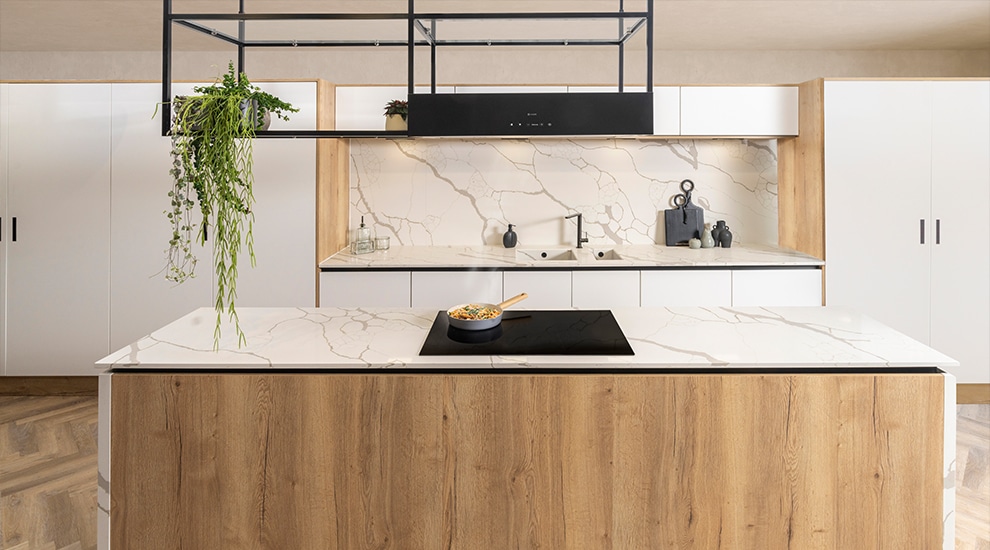
Designed for fans of industrial chic styling, this model measures 900mm wide, and incorporates touch controls and a CAP86CF charcoal filter. Washing the filter is easy using warm water with washing-up liquid in your sink. Or simply place it in a dishwasher with detergent and choose a washing programme which a maximum temperature of 70°C. Leave the rest of the dishwasher empty throughout this process to prevent food traces from settling on the filter, which could cause odours.
After washing, leave the filter to dry thoroughly on your drainer or in the dishwasher. Then bake your filter in the oven at 90°C for one hour. We recommend using this washing and regenerating method at least once every few months. Remove the filter and let it cool then return this to the hood. If you’re looking for ways to save on costs, regenerating your extractor filter is a great option. Rather than purchasing a new filter every six months, simply cleaning, and reusing the existing one can go a long way in reducing expenses. Not only is this approach more budget-friendly, but it’s also better for the environment as it reduces waste.
An anti-condensation system also helps to prevent condensation/water drops falling onto the hob below by heating the surface in contact with steam coming up from the hob. This model has a maximum extraction rate of 550m3/h.
Another stylish kitchen extractor fan that would work above an island is our COR541SL Ceiling Hood
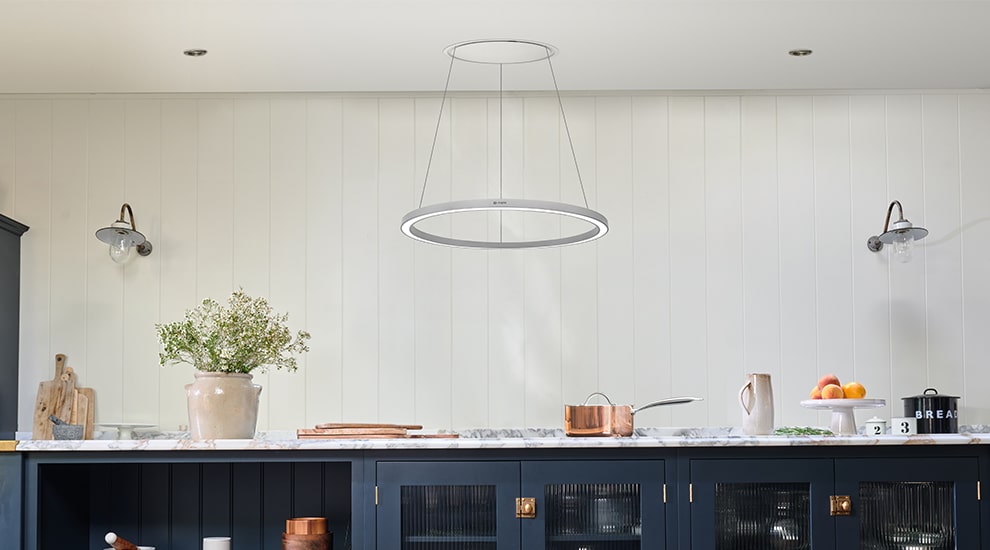
Featuring a stylish, circular silver ring design, this high-performance appliance is a great choice for anyone who is keen to combine both function and form. This model offers perimetrical extraction for reduced noise and increased pressure. It incorporates four speeds, a stainless-steel grease filter, and one 14W dimmable LED light.
In simple terms, kitchen extractor fans and cooker hoods work by removing and filtering the air in your room. Then they either expel that air outside through a vent, or recycle purified air back into the kitchen. So, your first big choice is whether to choose a ducted or recirculation model.
For a ducted version, you will need access to an exterior wall. Recirculation appliances work by passing air through a filter (rather than expelling it outdoors), so this type offers more flexibility in terms of location. In fact, if you live in a flat, a recirculation extractor might be your only option.
We have designed our new built-under Storm ST524 and ST854 models with versatility in mind. An adjustable extraction outlet allows for easy installation, so you can extract out of the top or back of the hood. These hoods (available in two different widths, 520mm and 850mm, respectively) are finished in stainless steel and feature electronic controls. Depending on the model/size selected, the maximum extraction rates are 743m3/h with a maximum 63dB sound level on Boost.
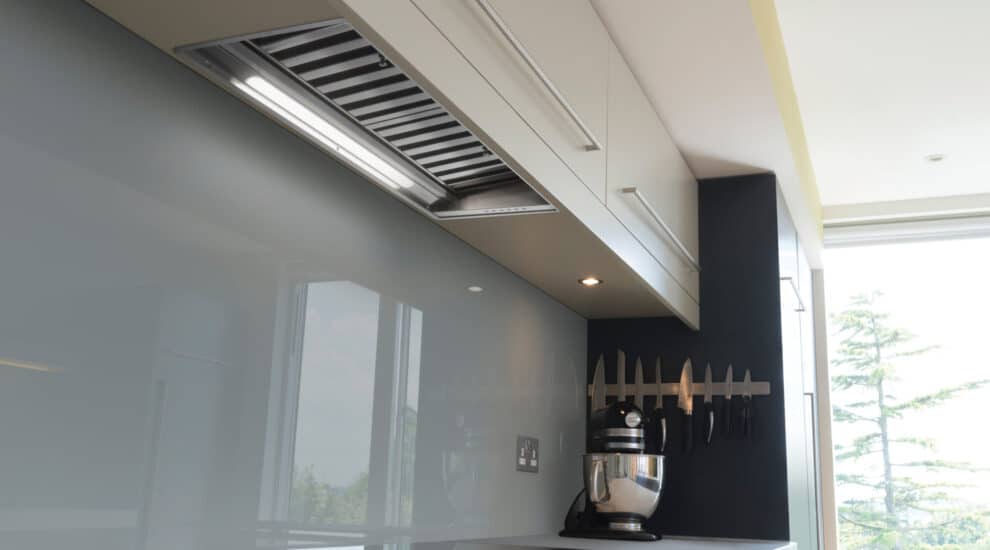
Both A-rated appliances feature innovative, dimmable colour-changing LED lights, which have the ability to change colour from a warm, yellow glow to a cool, white hue (this includes daylight). Simply hold the button in place while it transitions through different shades of light, till you find the ambience you require.
For the best results, your kitchen extractor fan will need to correspond to the size of your hob and your room’s dimensions. To find the optimum extraction rate in one area, use our online calculator. With the m3 of your room space and the m3/h extraction rate of your extractor, you can see how quickly the room would recirculate/clear.
Ducted extractor cooker hoods are very effective. They help remove cooking odours, steam and grease from your kitchen, and deposit them outside. And you won’t have to replace any charcoal filters, because these models don’t use them.
Recirculation appliances work by taking the air and passing it through a filter, before returning it in a purified condition back into the room, rather than venting it outside. They offer far more flexibility in terms of where they can be located, and they are quick and easy to install.
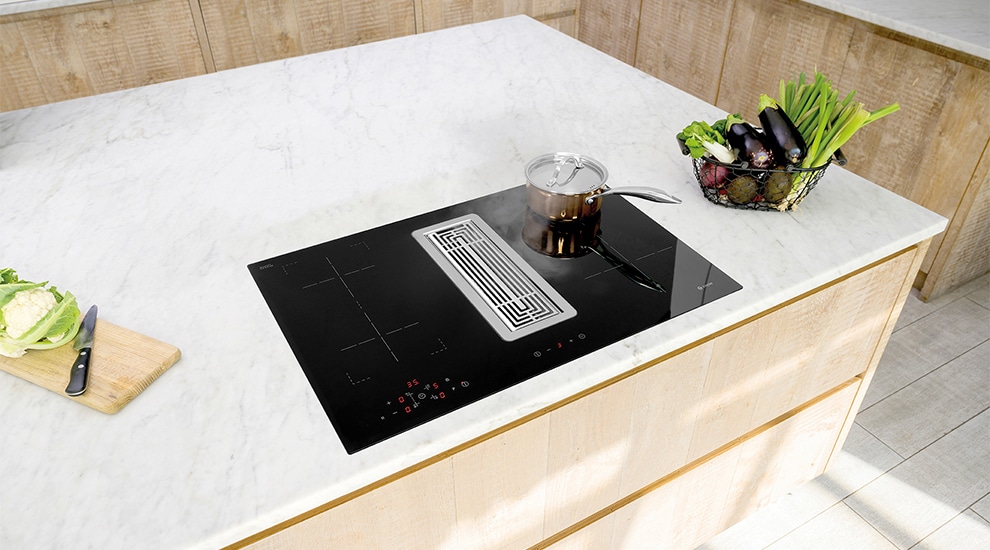
Most downdraft extractors are recirculation models. This type of kitchen extractor fan is usually fitted flush within a kitchen hob or worktop. They are ideal for kitchen islands, contemporary kitchen settings, or for anyone not keen on traditional hoods. That’s because a downdraft extractor integrates seamlessly with your work surface when not in use. Once switched on, a downdraft model may rise into place to offer unobtrusive extraction that’s perfect for pan cooking. This type of kitchen extractor fan sucks in grease and odours from the source.
This extracted air then passes through grease and/or charcoal filters, which clean it, before being recirculated back into the heart of your home. Downdraft kitchen extractor fans are sleek, chic and don’t block sight-lines. They also offer maximum flexibility in terms of location, so you can site their corresponding hobs almost anywhere on a worktop. However, you will need to ensure there is enough room beneath your worktop to accommodate the appliance when it’s not in use.
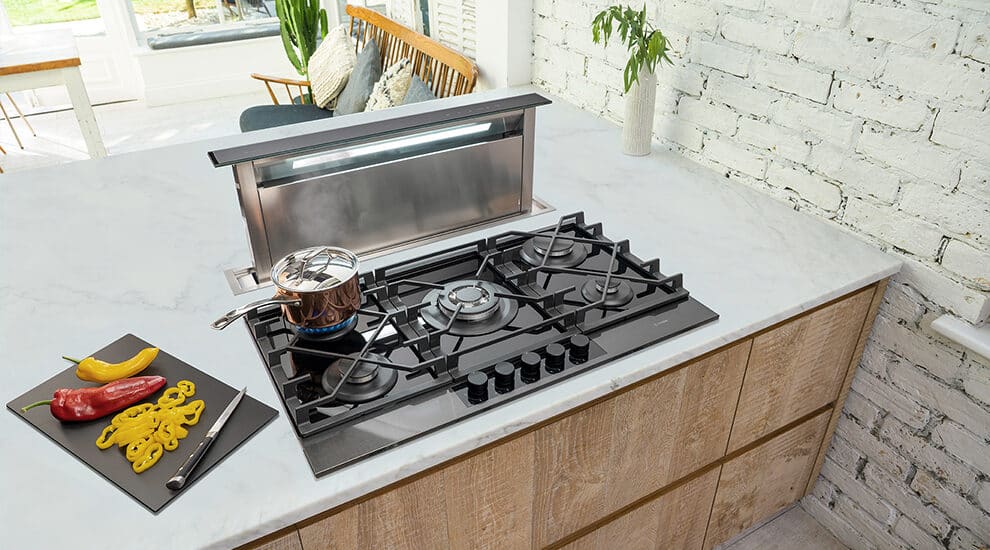
Our DD912BK downdraft kitchen extractor fan is suitable for both gas and electric hobs. It incorporates four speeds and a handy automatic timer that switches itself off after ten minutes.
Have you seen our latest kitchen makeover blog with Seasons in Colour blogger Jenny? She chose our DD810BK induction hob with downdraft to take pride of place in her new heart of the home. Here’s what Jenny has to say about the kitchen extractor fan within this appliance:
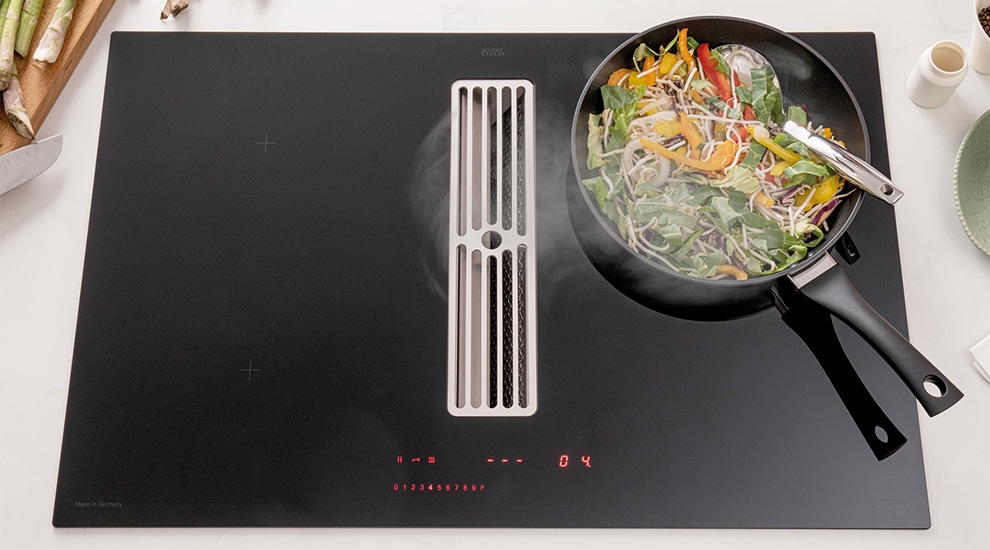
It’s easy to operate the extractor independently from the cooking functions on the DD810BK. Once cooking is complete, you can continue to use the downdraft extractor at a lower setting, too. The ‘boost’ function means that you have absolute control when you need extra power. After cooking, the venting components are easy to access for cleaning. There’s a safety tray to collect any liquid or food particles that might fall in, which is easy to remove and clean. You can choose between vented, which directs the extracted air outside, or recirculated installation for versatility. The latter transports air through a filter, which cleans it and returns it to the kitchen.
The term ‘cooker hoods’ includes a wide range of different models, including ceiling extractors, chimney, built-under/integrated and island cooker hoods. They each have their own advantages, and suit different types of kitchen spaces (and personal tastes).
Streamlined ceiling cooker hoods are another unobtrusive option that keeps your kitchen air clean without taking up too much space. Their low profile is ideal for kitchens with limited headroom. Conversely, they can also be sited in high ceilings, thanks to their superior extraction rates and handy remote controls.
Our CE902SS Stainless Steel Ceiling Hood is a ducted only model that fits flush to your kitchen ceiling. It incorporates four speeds (including a boost function), two dimmable LED lights and aluminium grease filters. It offers perimetrical extraction for reduced noise and increased pressure, resulting in improved motor performance.
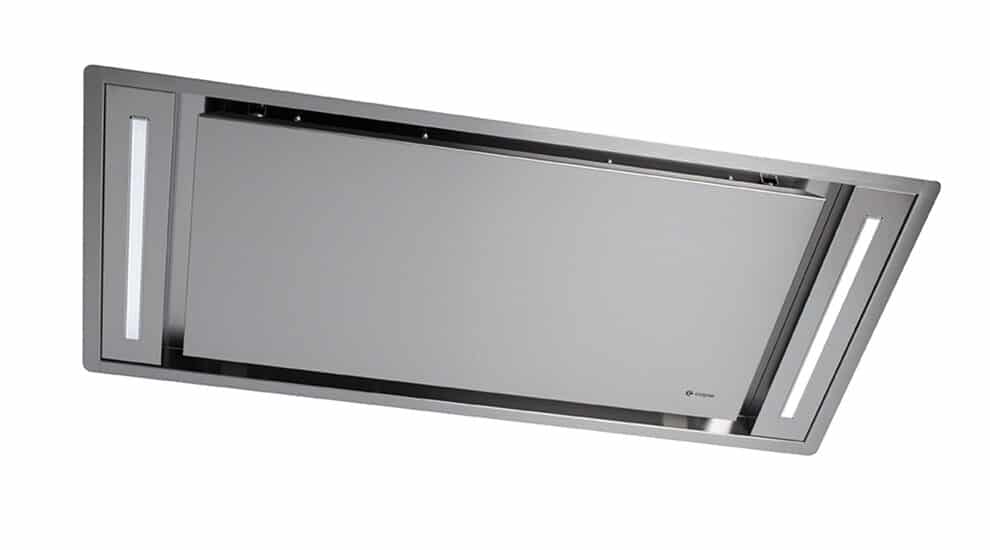
The CE902WH kitchen extractor fan offers the same functionality but it’s available in a white glass finish.
Chimney hoods are usually wall-mounted models, set above hobs fitted on wall-side worktops. They are available in a wide range of sizes and finishes, and provide exceptional extraction alongside stylish good looks
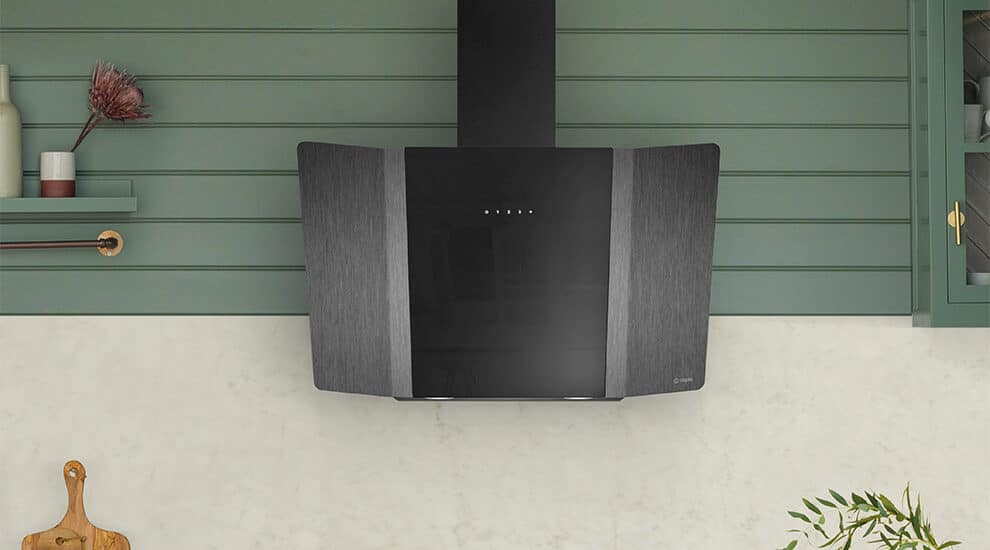
If gunmetal grey is your go-to kitchen shade for appliances, I recommend our A-rated Zella Gunmetal ZEL900GM wall chimney hood. It offers three speeds, a maximum extraction rate of 612m2/h, and a maximum sound level of 66dB.
Built-under or integrated cooker hoods are popular choices for compact kitchens. This type of kitchen extractor fan slots neatly into smaller spaces, such as underneath a wall-mounted cupboard. They are usually concealed behind a matching cabinet door when not in use.
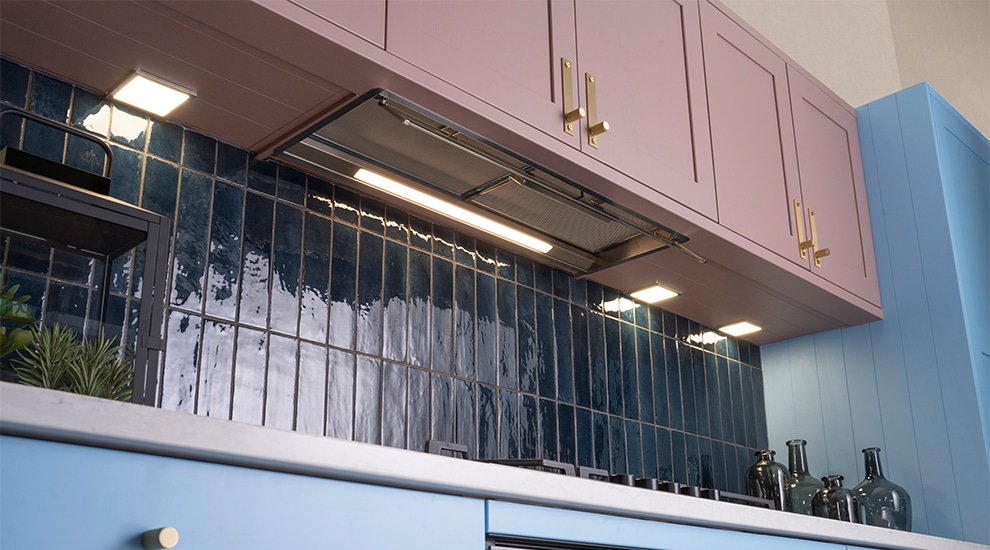
This year, we have launched a number of new built-under kitchen extractor fans, including the TBU521 and TBU851 (same spec but different sizes.) Featuring a stylish stainless-steel finish, these touch control, built-under cooker hoods are rated A+ for energy and A for grease absorption.
Depending on the model chosen, the maximum extraction level is an impressive 680m3/h-772m3/h, and the maximum sound level is 63dB. Both new models feature dimmable colour-changing LED lights, which you can tailor to match the warm or cool tones of your other kitchen lighting.
Are you looking for a gas hob? Our assistant product manager Ashley gives you the lowdown on two popular types – stainless steel and gas on glass versions on our blog
AD: Seasons In Colour blogger Jenny was provided with the DD810BK induction hob with downdraft at a discount for her kitchen makeover.